Standing in the lobby of the Hotel Splendid, just a few blocks from the center of the Cannes Film Festival, Pierre Rissient, a kind of cinematic ambassador without portfolio and something of a local institution, paused to critique the festival's official souvenir bag.
Every year, the festival gives moviegoers a "gimme" bag to facilitate the schlepping of its sundry guides, catalogs and promotional materials. This year's version is colorfully printed with dozens of names of past winners of the Palme d'Or, including luminaries of world cinema like Roman Polanski, Akira Kurosawa and Michelangelo Antonioni. But Cannes is traditionally a place of controversy as well as adulation. Antonioni was booed when he presented L'Avventura in 1960, and a gaudy piece of swag can provoke argumentative passion as surely as a jury's vote or an auteur's vision. "Roland Joffe should not be here!" Rissient said, with indignation. Welcome to Cannes.
The festival is marking its 60th incarnation with a burst of nostalgic self-congratulation, evident not only in that bag but also in the equally ubiquitous publicity poster, which shows a collection of stars and cineastes leaping exuberantly in the air and is described in the official program as "an ecstasy of the pleasure of acting and creation!"
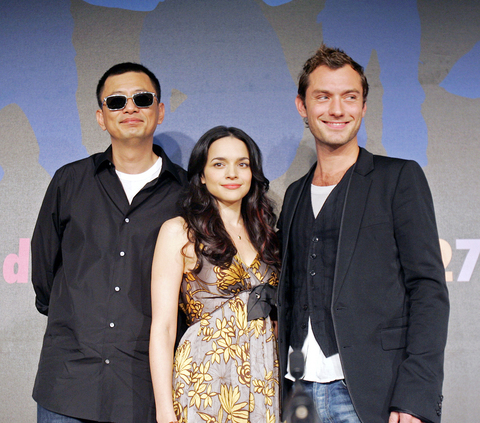
PHOTOS: AGENCIES
In between cold showers and new contenders for the Palme, audiences can sample ecstasies like John Farrow's 1953 western Hondo, starring John Wayne; three Shakespeare adaptations directed by and starring Laurence Olivier; and a collection of documentaries on filmmaking whose subjects include Marlon Brando, Lindsay Anderson and Rissient himself.
Quite a few of the names decorating that bag are back, including Joel and Ethan Coen, here with No Country for Old Men, their adaptation of Cormac McCarthy's austere, ultra-violent novel. Theirs is one of six American films in the 22-title competition.
Other American directors include James Gray, Julian Schnabel, Gus van Sant, David Fincher and Quentin Tarantino, here with Death Proof, his half of the box-office disappointment Grindhouse, aka Boulevard de la Mort. Tarantino, Van Sant and the Coens are all past Palme winners; other American laureates returning this year include Michael Moore, whose new documentary, Sicko, is playing out of competition, and Steven Soderbergh, here to provide an injection of Hollywood red-carpet glamour with his latest, Ocean's Thirteen.
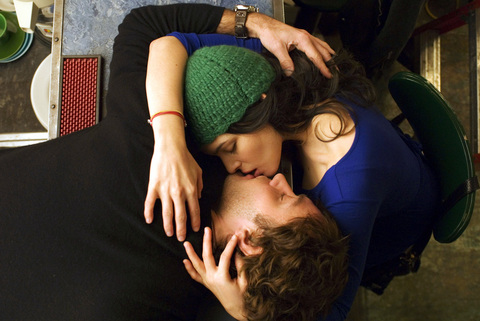
The festival officially opened Wednesday with the world premiere of My Blueberry Nights (藍莓之夜) by Wong Kar-wai (王家衛), the director's fifth appearance. In the past, Wong has provoked intense anxiety in Cannes with what appeared to be habitual tardiness. In 2004, his 2046 did not materialize in time for its first scheduled screening and, as soon as the festival was over, went back to Hong Kong to be completed.
My Blueberry Nights, Wong's first English-language film, which stars Norah Jones and Jude Law, has arrived safely.
English may be a dominant language at Cannes — it has been the language of five of the last seven winners of the Palme d'Or — but that may be less a sign of Hollywood imperialism than an aspect of the festival's cosmopolitan flavor. The resurgence of ambitious filmmaking in Eastern Europe and the former Soviet Union is also very much in evidence, with two competition films from Russia and one each from Romania, Serbia and Hungary.
The official recognition here of Asian cinema continues apace, evidenced by Wong and by new films from the Korean directors Kim Ki-duk and Lee Chang-dong, both in competition. Four out of 20 films in a parallel program called Un Certain Regard are from Asia, including that program's opening-night film, from the revered Taiwanese director Hou Hsiao-hsien (侯孝賢): The Flight of the Red Balloon (紅氣球), with Juliette Binoche, a tribute to the classic children's short The Red Balloon. Action enthusiasts are already looking forward to Triangle, a collaboration of three Hong Kong legends: Tsui Hark (徐克), Johnnie To (杜琪峰) and Ringo Lam (林嶺東).
Its international scope is part of what makes Cannes so unmistakably French. No matter how wide-ranging their selections, American festivals — New York, Chicago, San Francisco, even Sundance — remain parochial events, but Cannes is bigger than the city that bears its name. It is a French affair, a source of national pride and a reminder of this country's cherished, and perhaps vestigial, status as a capital of world culture. The covers of the glossy magazines cluttering newsstands are divided between Cannes and Nicolas Sarkozy, the newly elected president, and it is not always clear which — affairs of state or affairs of cinema — are more important.
For the next 11 days, in any case, Cannes will be the undisputed center of the movie universe, a place of hyperbolic debate, unexpected delight and also a certain measure of disappointment. Established reputations will be dented or burnished, and new ones will be minted.
A great deal of fruitless speculation will be devoted to trying to read the minds of the jurors. Headed by the British director Stephen Frears (The Queen), the panel is made up of the usual assortment of filmmakers (Marco Bellocchio and Abderrahmane Sissako among them), actresses (including Maggie Cheung (張曼玉), Sarah Polley and Toni Collette), and also, for good measure, a Nobel Laureate in literature, the Turkish novelist Orhan Pamuk. Somewhere, no doubt, there is a bag with his name on it.
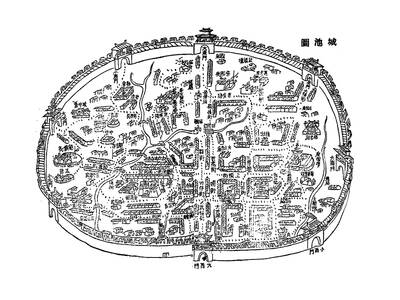
May 26 to June 1 When the Qing Dynasty first took control over many parts of Taiwan in 1684, it roughly continued the Kingdom of Tungning’s administrative borders (see below), setting up one prefecture and three counties. The actual area of control covered today’s Chiayi, Tainan and Kaohsiung. The administrative center was in Taiwan Prefecture, in today’s Tainan. But as Han settlement expanded and due to rebellions and other international incidents, the administrative units became more complex. By the time Taiwan became a province of the Qing in 1887, there were three prefectures, eleven counties, three subprefectures and one directly-administered prefecture, with
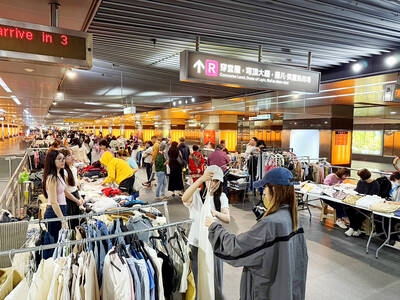
It’s an enormous dome of colorful glass, something between the Sistine Chapel and a Marc Chagall fresco. And yet, it’s just a subway station. Formosa Boulevard is the heart of Kaohsiung’s mass transit system. In metro terms, it’s modest: the only transfer station in a network with just two lines. But it’s a landmark nonetheless: a civic space that serves as much more than a point of transit. On a hot Sunday, the corridors and vast halls are filled with a market selling everything from second-hand clothes to toys and house decorations. It’s just one of the many events the station hosts,
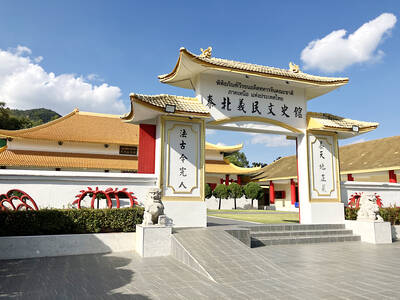
Among Thailand’s Chinese Nationalist Party (KMT) villages, a certain rivalry exists between Arunothai, the largest of these villages, and Mae Salong, which is currently the most prosperous. Historically, the rivalry stems from a split in KMT military factions in the early 1960s, which divided command and opium territories after Chiang Kai-shek (蔣介石) cut off open support in 1961 due to international pressure (see part two, “The KMT opium lords of the Golden Triangle,” on May 20). But today this rivalry manifests as a different kind of split, with Arunothai leading a pro-China faction and Mae Salong staunchly aligned to Taiwan.
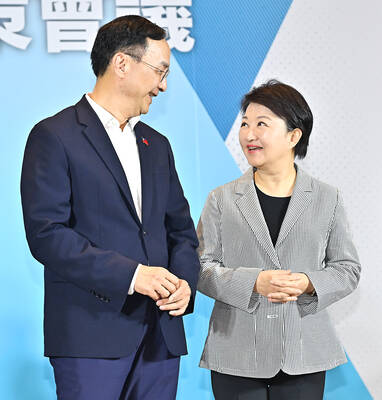
Two moves show Taichung Mayor Lu Shiow-yen (盧秀燕) is gunning for Chinese Nationalist Party (KMT) party chair and the 2028 presidential election. Technically, these are not yet “officially” official, but by the rules of Taiwan politics, she is now on the dance floor. Earlier this month Lu confirmed in an interview in Japan’s Nikkei that she was considering running for KMT chair. This is not new news, but according to reports from her camp she previously was still considering the case for and against running. By choosing a respected, international news outlet, she declared it to the world. While the outside world